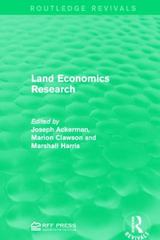Question
1) The Government of Canada has resisted calls from the union movement to increase the size of monthly Canada Pension Plan (CPP) payouts by raising
1) The Government of Canada has resisted calls from the union movement to increase the size of monthly Canada Pension Plan (CPP) payouts by raising the amount of money contributed by employees, employers, and the government to the CPP. Instead, the government has introduced the private pooled pension system as a way for individuals to save for retirement. Critics of this system argue that the fees for individual plans are much higher than CPP fees and that this strategy is no different than the current RRSP system.
2) Evaluate both sides of this debate between (a) greatly expanding CPP contributions and payouts and (b) the introduction of the private pooled pension system by the government.
a) Welfare is a provincial responsibility, but the federal government plays a role. What are the different social assistance programs the federal government offers? Provide a brief description of each.
b) George receives welfare benefits of $1,121 per month if he doesn't work. George can find work for $15 per hour. For every dollar earned working, benefits are reduced by $0.35. What is George's total income if he works 40 hours a month?
3)
a) What are some ways the government could try to mitigate the increasing costs to the Canadian health system?
b) Suppose there are two drivers, Jermaine and Janet. Jermaine is not a very safe driver. In fact, there is a 7.5 percent chance that he will have an accident within the next year. Janet is a relatively safe driver. Her chances of having an accident in the next year are only 1 percent. If Jermaine is involved in an accident, he will cost the insurance company $1,000,000. If Janet is involved in an accident, she will cost the company only $500,000. What is the expected payout that the company can expect from insuring these two drivers?
4)
a) Explain how asymmetric information problems such as adverse selection and moral hazard affect the Employment Insurance program.
b) Discuss how the flows between different labour market states influence the unemployment rate. How do these help one understand and determine the causes of unemployment?
5)
a) Suppose a self-employed economist makes a salary of $49,939. How much will that economist pay in CPP contributions if the rate is 9.9 percent, the yearly maximum pensionable earnings (YMPE) is $53,600, and the yearly basic exemption is (YBE) is $3,500?
b) During the 1960s and 1970s, total wages and salaries grew faster than real interest rates, but since the 1980s, total wages and salaries have grown at a slower rate than real interest rates. What are the reasons for this change? What are the implications for a pay-as-you-go system?
Step by Step Solution
There are 3 Steps involved in it
Step: 1

Get Instant Access to Expert-Tailored Solutions
See step-by-step solutions with expert insights and AI powered tools for academic success
Step: 2

Step: 3

Ace Your Homework with AI
Get the answers you need in no time with our AI-driven, step-by-step assistance
Get Started


